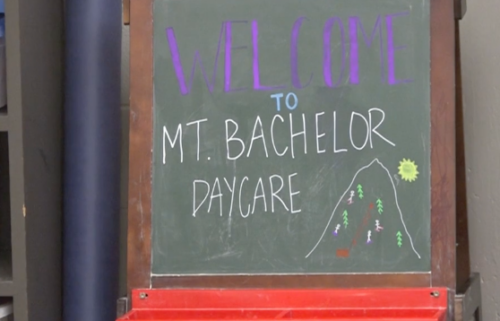Homeless Leadership Coalition undertakes Point-in-Time Count to measure homelessness in Central Oregon
(Update: Adding video, comments from Homeless Leadership Coalition, Shepherd's House Ministries)
Nationwide program provides snapshot of homeless crisis
BEND, Ore. (KTVZ) -- The annual Point In-Time Count of homeless people in Central Oregon started Tuesday. The count is a part of a state and nationwide effort to identify the number of individuals experiencing homelessness -- sheltered and unsheltered.
The effort greatly impacts the available funding for homeless services to our region and provides a snapshot of the growing housing and homelessness crisis.
It's the only source of nationwide data on homelessness and is required by the U.S. Department of Housing and Urban Development (HUD) of all jurisdictions receiving federal funding to provide housing and services for individuals and families experiencing homelessness.
“Truly, we have to be able to take care of each other as a community," Homeless Leadership Coalition Board Chair Eliza Wilson said Tuesday.
The Homeless Leadership Coalition, Central Oregon’s "continuum of care," heads the count process. It's designed as a 24-hour count but outreach groups will be trying to reach people until the end of the month.
Last year's count showed a 17% increase in the number of homeless in Central Oregon, compared to 2021.
Shepherd's House Ministries in Bend has been one beneficiary of the funding.
"We've seen a very large increase since we opened this facility, where we used to serve 70 and 80 people and now we're serving 100 to 110 people," Shepherd's House Emergency Services Director John Lodise said.
Shepherd's House Ministries and HLC, along with other service providers, go out to gather data for the count.
"Information about what led to homelessness, and when they were last stably housed, and just demographic information in general," Wilson said. "If we look at our homeless population, the highest number of people who are living unsheltered in Central Oregon are single individuals."
There are some challenges with the count, including less visibility of the homeless in January, compared to warm summer months.
Additionally, those dealing with homelessness don't always want to participate in the count. Incentives like clothing and hand warmers are handed out to encourage participation.
There have been changes to the count over the years, in an effort to make it more efficient.
Lodise said, "We can do observational counts, so if we see somebody, but we aren't actually engage them in a conversation, we have the ability to count them as long we provide certain information about our observation. Also this year, we're able to do the count based on the data tracking we do as our normal part of business, which is a part of the HMIS system."
Wilson says the count can sometimes correct misconceptions.
“So a lot of times you’ll hear in the media or maybe comment sections or different people in the community talking about people experiencing homelessness not being from here," Wilson said. "Or they (say they) come here because we have service providers here to help them. So we ask people questions to dispel those myths and to paint ... a true narrative of what is going on (and) why people are becoming homeless."
The Point in Time Count results are due to be released in April.
Here's the rest of the coalition's announcement:
The Point In-Time Count is the only source of nationwide data on sheltered and unsheltered homelessness and is required by the U.S. Department of Housing and Urban Development (HUD) of all jurisdictions receiving federal funding to provide housing and services for individuals and families experiencing homelessness.
This information helps the federal government to better understand the nature and extent of homelessness nationwide and helps to inform communities’ local strategic planning, capacity building, and advocacy campaigns to prevent and end homelessness.
The Point In-Time Count attempts to capture data on both sheltered and unsheltered individuals experiencing homelessness to provide a snapshot of homelessness in the United States. In addition to the total number of sheltered and unsheltered individuals experiencing homelessness, information is gathered on a wide range of characteristics of those experiencing homelessness including age, gender, race, ethnicity, veteran status, and disability status.
Individuals and families counted through this effort include people living in:
- Shelters
- Transitional housing
- “Doubled up” or precariously housed with families/friends
- Camping, sleeping outdoors or in cars or RV’s without full hookup
- Other places not designed for human habitation
Locally starting on Tuesday, January 24th and ending on January 31st, the HLC will be working with community partners to assist in conducting the confidential and anonymous surveys in La Pine, Bend, Sisters, Redmond, Prineville, Madras, and Warm Springs.
The HLC has organized a service-based count, leveraging already existing partnerships and services to those experiencing homelessness. Additionally, J Bar J Youth Services will offer expanded Point In Time Count access via telephone. Individuals can call 541-630-2533 to be counted between 9am and 5pm. A Bilingual English/Spanish speaking staff member will answer this phone number.
If you have any questions about this year's Point in Time Count please email info@cohomeless.org.
As the 2023 Point in Time Count quickly approaches, we want to express our gratitude for the efforts of all who continue to work together to serve our neighbors who are experiencing housing insecurity. Your service to our most vulnerable neighbors is life saving and hope giving. Together, we remain committed to a vision of Central Oregon where everyone has a safe, stable place to call home.
In partnership,
Lindsey Stailing, Vice-Chair, Homeless Leadership Coalition
Eliza Wilson, Chair, Homeless Leadership Coalition
| Steps to participate in the PIT Count Step 1: Register for a PIT training (links below) Point In Time Count Training Shelter Providers January 10th at 10:30am Click here to register Point In Time Count Training for Outreach/Service Providers January 12th at 10am Click here to register Step 2: Complete the mandatory PIT confidentiality waiver click here Step 3: Plan your strategy- How will your agency or volunteers maximize their count efforts during Point in Time? Step 4: Outreach providers pick up incentives from your designated local contact (Check who your local contact is below) Step 5: Reserve an iPad if needed on loan from NeighborImpact (See info below) Step 6: COUNT! *Miss a training? Visit the HLC's website to watch a recording of a training* Recordings available after Jan 13th |




